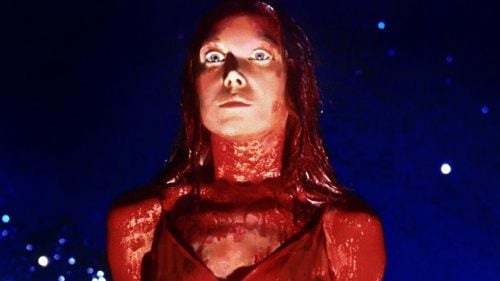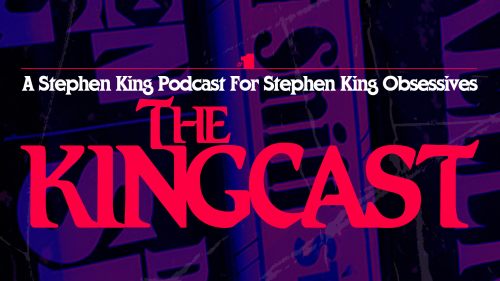DOCTOR SLEEP Review: An Imperfect Union Of King And Kubrick
As Stephen King once (or maybe twice) said, Stanley Kubrick’s The Shining is a good horror film but a horrible adaptation of King’s novel, one that arguably misses what makes the book so harrowing. And yet it’s nearly impossible to weigh one against the other; both are equally great for entirely different reasons: King’s novel is about alcoholism and the cycle of abuse, of battling ancient familial demons and the desperate struggle to assume control over something that seems uncontrollable. Kubrick’s film is a cinematic masterwork, but it’s more about the inherently evil nature of man and our precarious grip on sanity; it’s less concerned with exploring human themes and more preoccupied with treating the psyche like a poltergeist.
To put it another way: Kubrick’s film is cold and remote, echoing the story’s setting at the now-iconic Overlook Hotel, while King’s book is a veritable furnace, roiling with emotion and personal terror. Mike Flanagan attempts to reconcile the two with Doctor Sleep, itself based on King’s own book sequel, released in 2013. Although his efforts are admirable and often impressive, the end result – this marriage of cold and hot – is, perhaps unavoidably, somewhat tepid.
The story begins in 1980, not long after Danny Torrance and his mother, Wendy (played here quite well by Alex Essoe), move to Florida to escape the trauma of the events at the Overlook. While Danny learns how to lock the lingering ghosts away in special boxes he creates using his “shine” (with the help of Dick Hallorann, played by a convincing Carl Lumbly), an insidious group called the True Knot travels the country, preying on children like Danny – kids who have the shine. The shining is more powerful and “pure” in children, who have yet to be tainted by the banal horrors of maturity, but it’s even more potent when the child experiences intense, prolonged pain. This itself could be make for a compelling metaphor, but it’s only lightly touched upon and used primarily for visceral effect – particularly when the Top Knot, led by Rebecca Ferguson’s charismatic Rose the Hat (because she wears a hat, you see), tortures and kills a young boy (played by Jacob Tremblay) so they can feed on the shining (or “steam,” as they call it) as it leaves his body.
From there it’s a hop, skip, and a jump through the adult life of Danny (Ewan McGregor) as he struggles with the only thing he seems to have inherited from his father: alcoholism. After hitting rock bottom, Danny finds himself in a small northeastern town where he takes a job at a local hospice as a night orderly and discovers a new use for his shine by easing the pain of death for the elderly patients. At the same time, a young girl named Abra (Kyliegh Curran) is struggling with her emerging shine; while it helps her telepathically befriend Dan, it’s also drawn the attention of Rose and the members of the True Knot. Dan and Abra, their fates helplessly yet hopefully intertwined, are set on a path that will ultimately collide with the True Knot and bring Dan back to the Overlook to confront his demons.
That’s a verbose description, but Flanagan’s Doctor Sleep is a fairly bloated film. To the filmmaker’s credit, he’s delivered a far superior sequel to The Shining than King did with his novel, which is easily one of the author’s lesser works. Flanagan’s reconciliation of the two versions of The Shining is mostly successful in its ambitions. While Flanagan’s meticulous recreation of the Overlook is indisputably impressive, it’s the smaller nods to both Kubrick and King that feel truly effective: A shot of Ferguson’s Rose that begins in closeup, her eyes menacing beneath the brim of a black hat as the camera slowly retreats to reveal her sly grin, evocative of the iconic shots of characters similarly glowering in Kubrick's films; the ill-fated baseball kid’s jersey number, 19, an homage to The Dark Tower; the office of Bruce Greenwood’s doctor character, eerily identical to the office of Mr. Ullman in Kubrick’s The Shining; and so on. But for all that attention to detail, Flanagan misses something vital, evidenced by the minimal time spent with Dan’s alcoholism and subsequent recovery, or the way his latter near-relapse feels more like a basic film trope than an incisive portrait of addiction.
It’s possible that there's just too much plot in Doctor Sleep, a film that clocks in at 150 minutes. Watching it doesn’t feel like a chore, but that runtime is largely devoted to moving from one scene to the next and advancing the plot so we can get to the main attraction: the climax at the Overlook. It’s hard to fault Flanagan, who does his best to make something meaningful but only occasionally succeeds. Considering how deftly Flanagan married potent emotion and trauma with visceral horror in The Haunting of Hill House, this feels disappointing in comparison. Flanagan’s cinematic and narrative reconciliation of King and Kubrick’s The Shining is commendable, but naked in its effort. There is a scene in Doctor Sleep’s third act that comes frustratingly close to delivering an emotional gut-punch, were it not for an unfortunately distracting element – in this instance, just dancing around the spoiler makes it painfully obvious. Perhaps that’s unavoidable.
And yet there are many things about Doctor Sleep that succeed despite the underwhelming source material and the basic struggle of synthesizing the conflict between the two creators and their works. McGregor is truly remarkable as Dan Torrance, putting his personal experience with addiction to excellent use, and Curran rises to meet him every step of the way. Flanagan’s cast is casually diverse, and the film deviates from King’s novel in ways that largely benefit the narrative. On paper, Rose the Hat and the True Knot are a silly group and all their talk of “steam” is corny at best; but Ferguson, with the help of Zahn McClarnon, Robert Longstreet, and Carel Struycken, transform them into something tangibly insidious. There’s an extremely good scene in the third act where Ferguson channels Jack Nicholson and the result is intensely delightful.
But most effective of all is the film’s conclusion: It’s Flanagan’s biggest departure from King’s Doctor Sleep, but it reconciles both versions of The Shining in a way that is ultimately poignant and demonstrates the filmmaker’s keen understanding of what makes these two sides of the same story so great – even if their makers failed to understand one another. With a couple of glaring exceptions, these final climactic scenes are intensely devastating and cathartic as they build to a breathtaking conclusion in which Flanagan and McGregor take all these disparate parts and distill them into one perfect moment.



